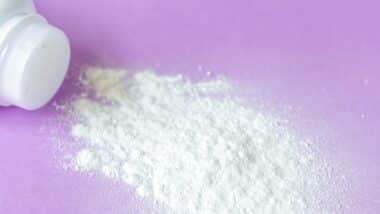 Dilantin rash is a recognized risk associated with taking one of the most commonly used anti-convulsant medications.
Dilantin rash is a recognized risk associated with taking one of the most commonly used anti-convulsant medications.
It may only be a passing side effect, but in rare cases it can progress into potentially life-threatening conditions known as Stevens Johnson Syndrome and Toxic Epidermal Necrolysis.
Dilantin is Pfizer’s brand name for the drug phenytoin. The same drug is also sold under the brand name Phenytek and in the U.K. under the name Epanutin.
Phenytoin has a long history of use as a treatment for epilepsy. It was invented in 1908 to control the convulsions associated with electroshock therapy. Today, Dilantin is one of the most widely used drugs in the world. Other drugs have supplanted it as a first-line treatment for epilepsy, but it still is readily used as an emergency treatment for seizures and status epilepticus.
Among all patients taking Dilantin, about one in ten patients develops a phenytoin rash within the first few weeks of use. It is possible this rash may not be serious, but in rare cases phenytoin rash becomes serious enough to require hospitalization.
It can further develop into more problematic skin conditions like lupus erythematosus, various forms of dermatitis, Stevens Johnson Syndrome or Toxic Epidermal Necrolysis.
Because of the risks associated with these conditions, patients should consult their doctor right away at the first sign of a Dilantin skin rash.
Dilantin SJS
A Dilantin rash that develops into Stevens Johnson Syndrome or Toxic Epidermal Necrolysis affects mainly the skin but can also have disastrous effects on the rest of the body. These two conditions are now believed to be variants of the same condition, differing mainly in the amount of surface area of skin is affected.
Dilantin SJS and TEN tend to start with symptoms that resemble those of the flu or a cold – symptoms like fever, cough, sore throat, or runny nose. Soon after that, skin symptoms begin with a phenytoin rash that starts on the torso and quickly spreads to the face and limbs.
Blisters then develop within these areas of Dilantin rash. These blisters merge, forming sheets of skin that peel away. In SJS, ten percent or less of the body’s surface area peels away; if that area exceeds thirty percent, the condition is referred to as TEN. Anything between those benchmarks is considered an overlap between the two conditions.
SJS and TEN also bring other symptoms besides those affecting the skin. The eyes may become red and inflamed and may develop conjunctivitis. The same blisters that form on the skin can form on the mucous membranes.
Blisters in the mouth or throat can make speaking or swallowing difficult, and blisters in the digestive tract can cause diarrhea. These blisters may also manifest as ulcers on the genitals or in the urinary tract.
Treatment of Dilantin SJS starts with discontinuation of Dilantin. After that, care providers can usually manage symptoms while the body heals itself. This treatment can require weeks of hospitalization, often in a burn unit if one is available.
For a patient who may not have expected a simple Dilantin skin rash to develop into such a destructive condition, the costs can be enormous – not just in pain and suffering but also in the expense of medical bills coupled with the inability to earn income for possibly weeks at a time.
Do YOU have a legal claim? Fill out the form on this page now for a free, immediate, and confidential case evaluation. The SJS attorneys who work with Top Class Actions will contact you if you qualify to let you know if an individual lawsuit or Dilantin class action lawsuit is best for you. [In general, Dilantin lawsuits are filed individually by each plaintiff and are not class actions.] Hurry — statutes of limitations may apply.
ATTORNEY ADVERTISING
Top Class Actions is a Proud Member of the American Bar Association
LEGAL INFORMATION IS NOT LEGAL ADVICE
Top Class Actions Legal Statement
©2008 – 2025 Top Class Actions® LLC
Various Trademarks held by their respective owners
This website is not intended for viewing or usage by European Union citizens.
Get Help – It’s Free
Help for Victims of Stevens Johnson Syndrome
If you or a loved one were diagnosed with Stevens Johnson Syndrome (SJS) or toxic epidermal necrolysis (TEN) after taking a prescribed or over-the-counter medication, you may be eligible to take legal action against the drug’s manufacturer. Filing an SJS lawsuit or class action lawsuit may help you obtain compensation for medical bills, pain and suffering, and other damages. Obtain a free and confidential review of your case by filling out the form below.
An attorney will contact you if you qualify to discuss the details of your potential case at no charge to you.
Oops! We could not locate your form.












